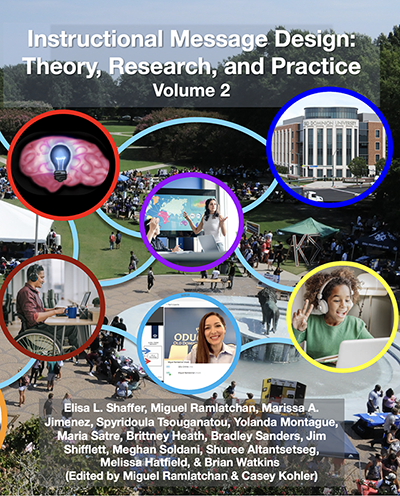
Instructional Message Design, Volume 2
ORCID
0000-0001-8157-3713 (Shaffer)
Document Type
Chapter
Publication Date
Fall 2022
DOI
10.25776/4tmr-yc41
Volume
Instructional Message Design: Theory, Research, and Practice (Volume 2)
Pages
28 pp.
Abstract
Cognitive Load Theory’s (CLT) purpose is to aid in the design of messages, instructional and otherwise, so that learning and message retention are more effective. CLT was introduced in 1998 by John Sweller and his colleagues. They used the constructs of three areas of memory, sensory, working, and long-term memory, to develop a theory to address the limited capacity of working memory. Through these efforts, they created the concepts of intrinsic, extraneous , and germane cognitive load and used these concepts to explain how various loads are placed on working memory. The purpose of this chapter is to describe the three areas of memory, the three concepts of cognitive load, and address various effects created by intrinsic and extraneous cognitive load while guiding instructional designers on best practices to minimize load and maximize performance.
Repository Citation
Shaffer, Elisa L., "Chapter 02: Cognitive Load Theory and Instructional Message Design" (2022). Instructional Message Design, Volume 2. 2.
https://digitalcommons.odu.edu/instructional_message_design_vol2/2
Included in
Educational Methods Commons, Educational Psychology Commons, Educational Technology Commons, Instructional Media Design Commons, Online and Distance Education Commons


Comments
Rights: CC BY-NC-ND: Attribution-NonCommercial-NoDerivs https://creativecommons.org/licenses/by-nc-nd/3.0/us/